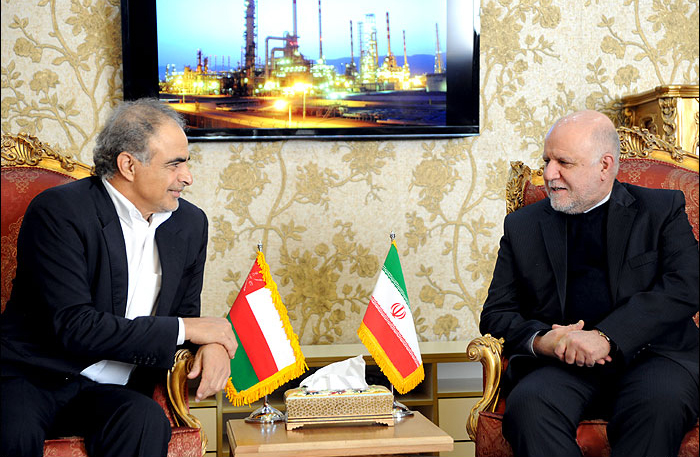Tehran and Muscat on Tuesday signed a preliminary agreement for a major offshore pipeline project to supply Iranian natural gas to Oman, with top European and Asian companies reportedly in line to implement the project.
The memo, which is an agreement in principle, was signed on the sidelines of a meeting between Oil Minister Bijan Namdar Zanganeh and his Omani counterpart Mohammed bin Hamad al-Rumhi in Tehran, Mehr News Agency reported.
Representatives of French oil and gas giant Total S.A., Royal Dutch Shell, German energy company Uniper SE, Japan's Mitsui and Korea Gas Corporation discussed their plans and vision for the marine gas pipeline on the sidelines of the signing ceremony.
Ali Asghar Hendi, an adviser to Zanganeh, and Saif bin Hamad al-Salmani, director general for planning and projects evaluation at Oman's Oil and Gas Ministry, signed the agreement. The two sides had signed an agreement in late 2015 to conduct feasibility studies on the prospective pipeline.
The subject of the pipeline, which first came to the forefront in 2013, is aimed at supplying gas to the neighboring sultanate through an offshore pipeline for 15 years.
"The pipeline is estimated to cost $1.2 billion. As agreed, it will circumvent the maritime boundary of the United Arab Emirates" because the emiratis will not allow the pipeline to be laid in their territorial waters, Zanganeh said.
Zanganeh said the decision means the pipeline will be laid on parts of the Sea of Oman which could go deeper than planned. According to al-Rumhi, the pipeline may b laid close to 1,000 meters below the sea's surface instead of the shallower UAE waters at around 300 meters.
The two neighbors hope the pipeline can be commissioned two years after construction work begins.
------- Final Agreement by Feb.
Zanganeh played down concerns that volatility in the oil/gas market in the past three years could hamper the development of the pipeline and said the project is still viable.
"Construction of the pipeline in deep waters will not affect the dynamics of the pipeline project and the two sides are eager to move ahead," said the minister. "We expect to forge a final agreement by the end of February."
He added that operations to chart out the route of the underwater gas pipeline will be completed in a few months.
The project will be carried out in three phases, namely offshore, onshore and installations.
The pipeline will stretch over 400 kilometers. The onshore part will cover 200 kilometers from Rudan County to the small town of Kuhmobarak both in southern Hormozgan Province.
The marine section between Iran and Sohar Port in the neighboring sultanate will be 200 kilometers. Reportedly, Iran will be able to use Oman's Qalhat liquefied natural gas (LNG) plant, which has the capacity to liquefy 10.4 million tons of LNG per annum.
"The pipeline will allow us to take part in Oman's LNG projects," Zanganeh said without elaboration.
Iran has been tinkering with plans to build facilities to produce LNG and liquefied petroleum gas (LPG), all to no avail. Converting natural gas into liquid form will make it possible to export the fossil fuel via tankers in a way similar to crude oil exports.


